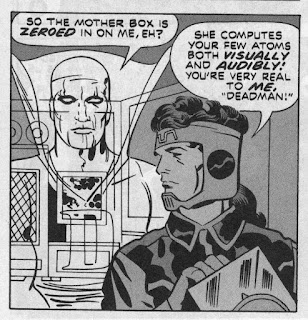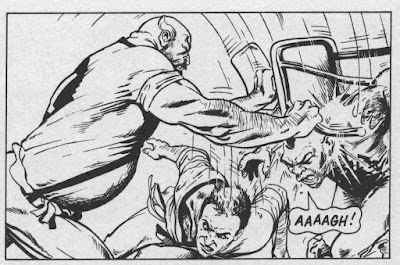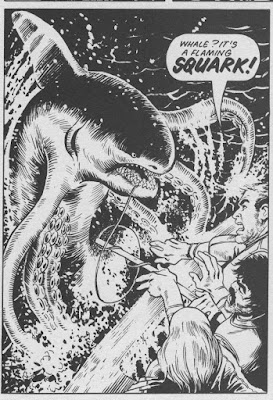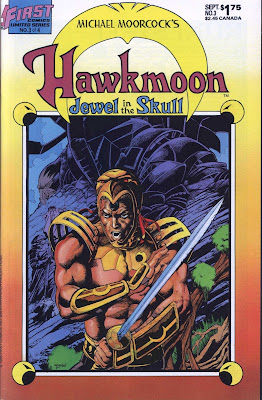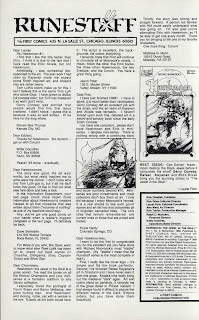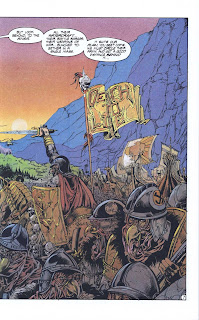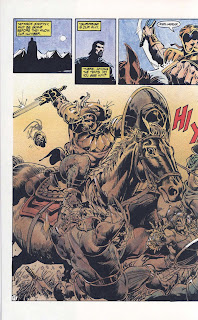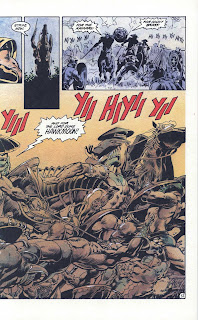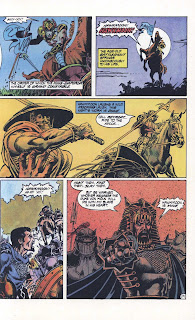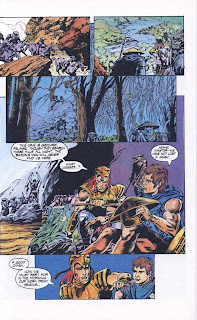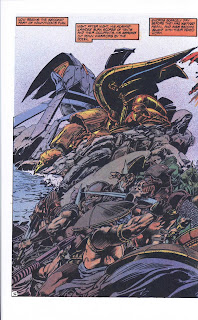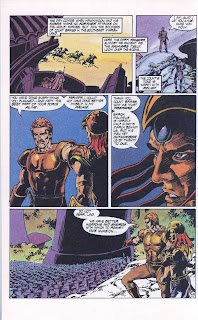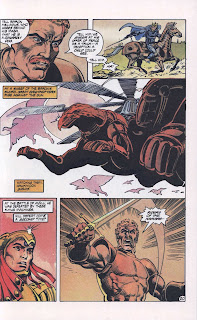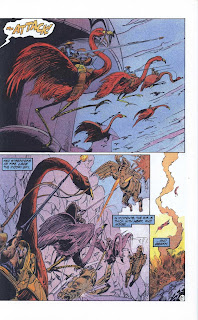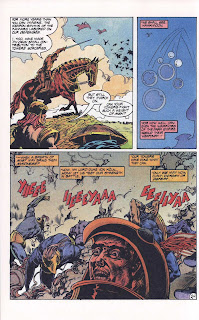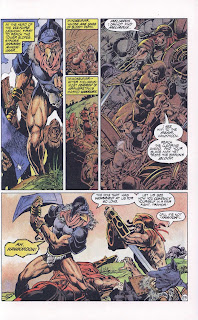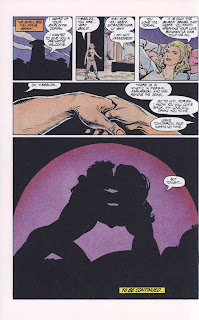DC Comics, 1999
In his Introduction, former Kirby aide Mark Evanier relates that, although he was 53 years old at the time he joined DC and began composing his 'Fourth World' franchise, Kirby was well aware of the so-called 'Generation Gap' then roiling American society. The Forever People was Kirby's way of portraying younger people in a sympathetic light, as well as promoting a subtle social commentary that touched on the presence of corruption and vice in the 'older' generation ruling society.
The Forever People were a team of five superpowered denizens of New Genesis who came to Earth for adventure and to right wrongs. They consisted of Big Bear, the quintessential 'hippy'; Vykin the Black; Mark Moonrider; Serafin, a kind of updated version of the Kid Colt character Kirby had illustrated in his old Atlas / Timely days; and Beautiful Dreamer, the 'token' girl member. The team traveled using their unique 'super cycle' and a portable computer called 'Mother Box'.
How does The Forever People hold up, some 46 years later ? To be fair, it was released in the Silver Age of comics, and like many of the comics of that era, particularly those which adhered to the Comics Code, its plot will seem rather tame to modern-day readers.
It doesn't help matters much that Kirby, as a middle-aged man, was not entirely in synch with the youth culture of the day - his use of phrases like 'she's a groove !', and words like 'uncool', however sincere in their effort to capture the youth culture of the early 70s, were unconvincing at the time, and are even more so today.
Where The Forever People does still shine is in Kirby's artwork, ably inked by Mike Royer. The comic represented a chance for Kirby to show what he could do when he was allowed to work on his own intellectual property, and the panels in The Forever People have an energy and verve that takes the 'classic' Kirby style and does a little bit more with it. It's all the more impressive to realize that Kirby was drawing several different titles for DC at this time, and his workload was significant.
So, who will want to pick up this compilation of The Forever People ? Kirby fans will of course want a copy, although I suspect that they also will wish that DC releases a color version printed on quality stock paper. Until such a time as this happens, used copies of The Forever People are creeping up in price with each passing year......I might suggest getting a copy sooner, rather than later, if you are interested.







